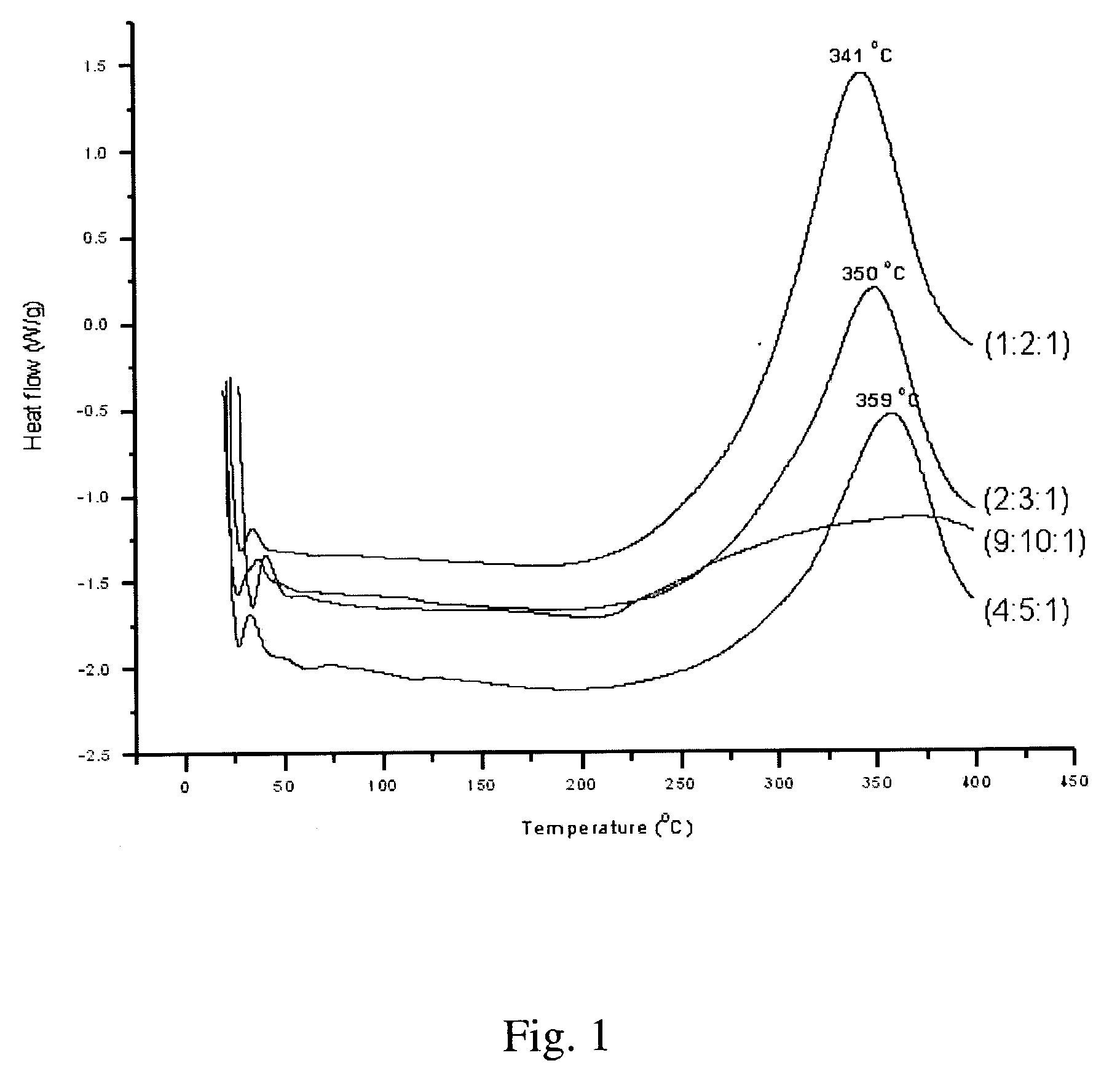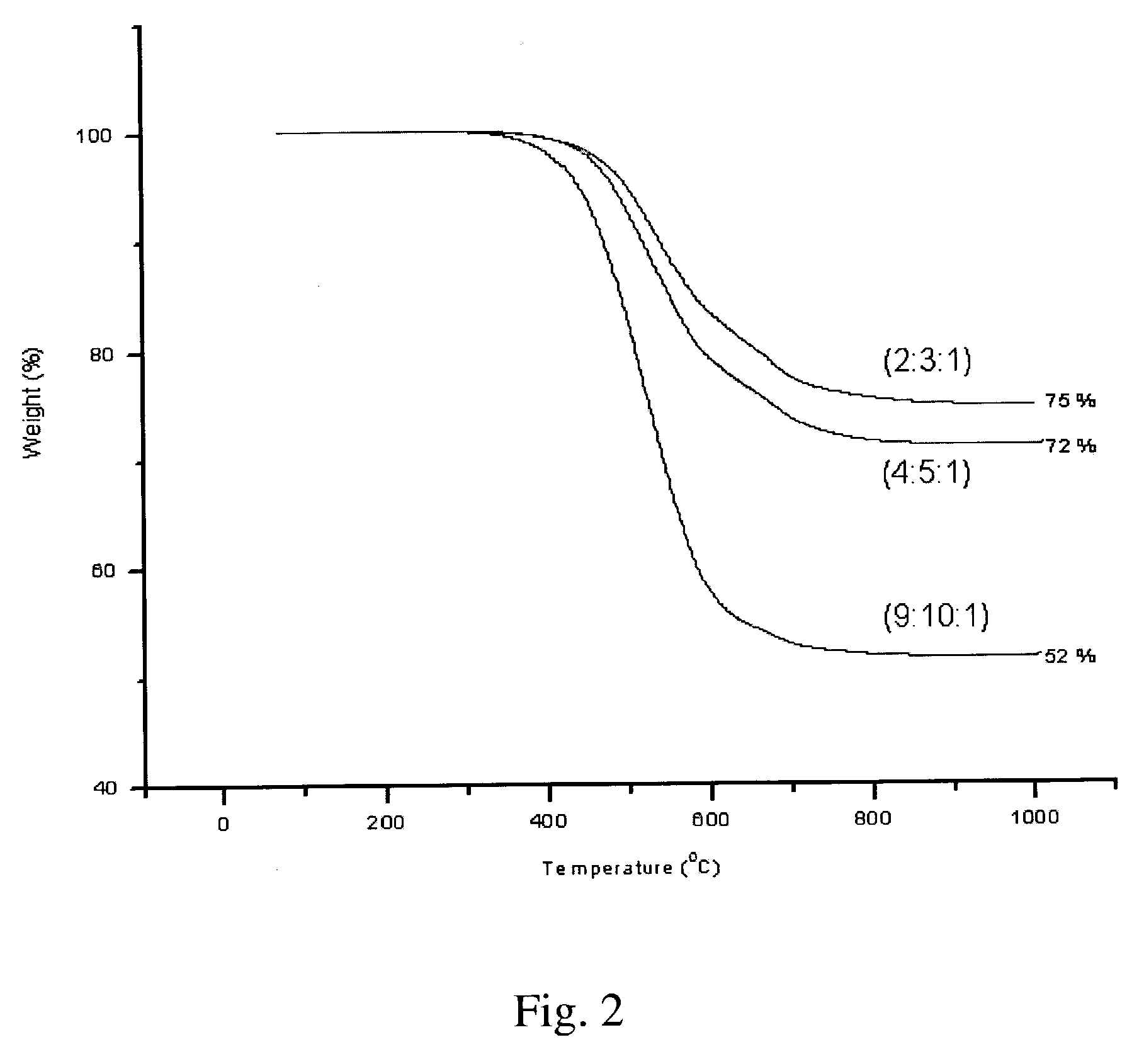Synthesis of elastomeric poly(carborane-siloxane-acetelyene)s
a technology of carboranesiloxane and elastomeric polymers, which is applied in the field of cross-linked linear polymers, can solve the problems of reducing the preference for skeletal cleavage of the backbone, high cross-linking, and inhibiting the natural flexibility of the si—o bond
- Summary
- Abstract
- Description
- Claims
- Application Information
AI Technical Summary
Problems solved by technology
Method used
Image
Examples
example 1
[0054] Synthesis of chlorodisiloxane-capped acetylene—A flame-dried 250 mL Schlenk flask, under argon, was charged with 10 mL of THF and was cooled to −78° C. by isopropanol / dry ice. n-BuLi (2.77 mL of 2.5 M solution in hexanes, 6.92 mmol, 4 eq.) was added slowly to the THF. After 10 min, C4Cl6 (0.27 mL, 1.73 mmol) was added drop wise over 10 min. The resultant gray-brown slurry was warmed to room temperature and stirred for 3 hours. After this period, the mixture was cooled again to −78° C. and DCTMDS (0.68 mL, 3.46 mmol) was added drop wise via a gas-tight syringe. The mixture was then warmed to room temperature and stirred for 2 hours, resulting in the formation of a large amount of white precipitate (LiCl).
example 2
[0055] Synthesis of lithiated m-carborane-capped disiloxane—In a 250 mL flame-dried flask, under argon, m-CB (0.5 g, 3.47 mmol) was dissolved in1 mL of THF and cooled to −78° C. LDA (3.5 mL, 7.01 mmol) was added dropwise to the solution resulting in the formation of a reddish orange solid. On warming the mixture to room temperature, the solid re-dissolved in THF. At this point, the volatiles were removed under vacuum. The residue was re-dissolved in 2 mL of THF and the mixture was cooled to 0° C. To this solution, DCTMDS (0.34 mL, 1.73 mmol) was added dropwise via a gas-tight syringe. The mixture was stirred for 3 hours.
example 3
[0056] Synthesis of (2:3:1) poly(carborane-disiloxane-acetylene) linear polymer—The solution resulting from Example 1 was cannulated into the flask containing the result of Example 2. The mixture was stirred further for 2 hours. At this time, a few drops of DCTMDS were added to the mixture and the stirring was continued for an additional hour. Once the stirring was completed, the mixture was poured into 50 mL of cold saturated NH4Cl and was extracted three times with 75 mL each of Et2O. The Et2O extracts were combined, washed with 100 mL brine, and dried over anhydrous Na2SO4. The dried extracts were filtered through a one-inch pad of Celite and the solvents were removed under vacuum. A dark brown viscous oil was obtained.
PUM
| Property | Measurement | Unit |
|---|---|---|
| temperatures | aaaaa | aaaaa |
| temperatures | aaaaa | aaaaa |
| temperatures | aaaaa | aaaaa |
Abstract
Description
Claims
Application Information
 Login to View More
Login to View More - R&D
- Intellectual Property
- Life Sciences
- Materials
- Tech Scout
- Unparalleled Data Quality
- Higher Quality Content
- 60% Fewer Hallucinations
Browse by: Latest US Patents, China's latest patents, Technical Efficacy Thesaurus, Application Domain, Technology Topic, Popular Technical Reports.
© 2025 PatSnap. All rights reserved.Legal|Privacy policy|Modern Slavery Act Transparency Statement|Sitemap|About US| Contact US: help@patsnap.com



